Diammonium Phosphate (DAP) is a widely used chemical compound with significant applications in agriculture and industry. Being the best manure, it offers basic nutrients necessary for growth of plants and fertility of soils namely nitrogen and phosphorous. Apart from being utilised by farmers to improve crop yields, DAP is mixed in fire retardant compositions and employed in various industrial operations. This article aims to go into depth about different facets of Diammonium Phosphate including its structure, manufacturing process, uses, advantages and eventual environmental implications. Readers can get an overall understanding how important it is to know more about the intricacies and rewards that accompanies DAP thereby playing a key role not only in farming but also industry.
What is Diammonium Phosphate (DAP)?
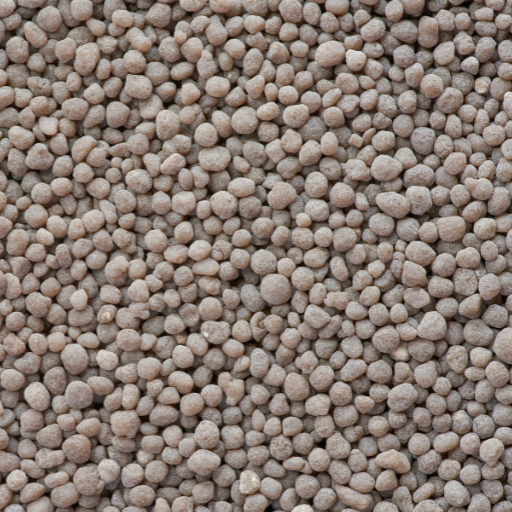
Diammonium Phosphate (DAP) is an ammonium phosphate salt with the chemical formula (NH4)2HPO4. It is produced by combining ammonia and phosphoric acid, resulting in a highly effective fertilizer. This granular compound is water-soluble, quickly releasing nitrogen and phosphorus into the soil, fostering robust plant growth and improving soil fertility. DAP’s balanced composition of essential nutrients makes it a valuable resource in agriculture, ensuring productive crop yields and supporting sustainable farming practices.
Overview and Composition
Diammonium Phosphate (DAP) is made up of ammonium ions (NH4+) and phosphate ions (HPO4^2-), which gives it a chemical formula of (NH4)2HPO4. DAP has been synthesized from ammonia (NH3) combined with phosphoric acid (H3PO4), leading to very efficient compound that delivers much needed nutritional elements. The solubility of this material in water allows for fast nutrient release presenting plants with instant supplies of nitrogen and phosphorous. This particular property becomes crucial when trying to boost the growth of health trees as well as maintain good soils’ structure. DAP serves farmers well through its compositional balance because it enhances soil productivity while protecting environment.
Understanding the Chemical Formula
The chemical formula of Diammonium Phosphate (DAP) is (NH4)2HPO4. This formula indicates that each molecule of DAP contains two ammonium ions (NH4+) and one hydrogen phosphate ion (HPO42-). The chemical reaction that produces DAP involves ammonia reacting with phosphoric acid, forming this fertilizing compound. Essential nitrogen comes from ammonium ions while important phosphorous comes from phosphate ions, both vital nutrients for plants’ growth. Balanced nutrient profile enables DAP work effectively as a fertilizer; hence, its use results in high agriculture outputs.
Common Uses and Applications
Diammonium Phosphate (DAP) is widely employed in agriculture as plants’ main source of nitrogen and phosphorus. It is preferred because it can provide a rapid and long-term release of these necessary nutrients, which help grow crops and improve soil quality. DAP is normally applied during planting periods to stimulate root development and increase yield production. Additionally, it features prominently in the making of superior-grade fertilizers that address various agricultural needs through nutrient balance.
In addition to agriculture, DAP finds applications in various industrial processes. When burned, it releases ammonia gas that extinguishes fire; thus, it is considered a class B fire extinguisher under the NFPA labeling system. In water treatment, it works as a scale inhibitor thereby preventing deposition on metallic surfaces. Also used by food processors as an agent for raising bread dough or fermentation media.
Technical Parameters for DAP include solubility at 25°C=58g/100g H2O making it effective when dissolved into an aqueous medium. This formular consists roughly 18% nitrogen (N) at molecular level and approximately 46% P2O5 that impregnate into different applications with essential elements content . The above parameters make this product suitable for use in increasing plant growth rates over several industries
How is Diammonium Phosphate Used as a Fertilizer?
Other than this, DAP is commonly used as a fertilizer by incorporating it into the soil during planting or in a larger nutrient management program. Its immediate source of nitrogen and phosphorus is essential to root development and overall plant health. Dissolving quickly when placed on the soil, its nutrients become available for crops through absorption. Growth becomes intense, ensuring that crop yield goes up; thus, DAP is suitable for this purpose because it dissolves fast, making its nutrients readily available for uptake by crops (DAP).
DAP’s relatively high pH can also help neutralize acidic soils, thereby promoting plant growth. Its well-proportioned nutrient composition makes it suitable for different types of crops, from grains and cereals to fruits and vegetables.
Soil and Crop Benefits
Again, there are several benefits associated with planting such as quick nitrogen supply, ready availability of phosphate which is vital for plant growth among others. This promotes rapid rooting and early maturity stages so farmers can harvest much earlier. It implies that growers will enjoy quicker results owing to high solubility of DAP making nutrients accessible to plants hence enhancing fast growth as well as resulting in higher yields (DAP). Furthermore, it helps improve soil structure by stimulating microbial activity needed to maintain healthy soils.
This way, acid soils will contribute towards easier absorption of necessary elements required by plants since they have been neutralized by the relative high pH level inherent in DAP. Such an adjustment would greatly increase productivity particularly in areas where the optimum plant growth is hindered due to increased soil acidity levels (Wulfhorst et al., 2008). A balanced nutrient content represented mainly by 18% N2O5 and 46% P2O5 makes up a good fertilization approach applicable across various crops including grains: wheat corn; cereals: barley oats; fruits and vegetables.
Finally, minimal additional soil amendments are required when using DAP, easing nutrient management programs and lowering the total cost of farm inputs. Through incorporating DAP into the soil, farmers can ensure a consistent supply of essential nutrients throughout the growing season leading to higher-quality harvests and more sustainable agricultural practices (USDA 2009).
Methods in Agriculture
Several application methods in agriculture are relevant to DAP depending on various farming practices and crop requirements. For example, broadcasting is widely used whereby DAP granules are uniformly distributed throughout the field surface before planting. Doing this makes it easy for an equal amount of nutrients to be delivered to each plant. This method has proven to be simple and inexpensive since it ensures that all nutrients are evenly distributed within a field (DAP). The best way enhances the availability of plant food by placing fertilizers near their roots after spreading them on top.
Banding is another popular method where DAP is applied in concentrated bands either at planting time or side-dressed along rows in established crops. The technique helps put nutrients close to root zones thus improving nutrient-use efficiency while reducing loses as far as run-off or leaching is concerned.
Fertigation is another advanced application method used in precision agriculture. It entails dissolving DAP into irrigation water. In cases where rainfall is not enough, this process may facilitate precise nutrient delivery as well. Another means of dealing with localized deficiencies while plants grow involves spraying leaves directly with a solution made from Diammonium Phosphate (DAP) (Dole & Chalmers 2010).
Besides, technical parameters such as rates would range between 100-200 lbs per acre for DAP basing on soils fertility levels and expected yield type. Also considerations should be given on soil pH and existing nutrient levels before applying this fertilizer so that best results can be achieved after its use (Wulfhorst et al., 2008). Therefore, selecting and utilizing the right method brings about maximum benefits for DAP in any specific agricultural situation.
Phosphorus and Nitrogen Content
In Diammonium Phosphate (DAP), Phosphorus (P) and Nitrogen (N) are the two nutrients that affect plant growth most. For example, DAP contains around 18% ammonia nitrogen and 46% phosphorous pentoxide (P₂O₅). The high phosphorus content is essential for the development of roots, flowers, seeds, and fruit; thus it plays a crucial role in initial phase of plants’ growth. In turn, nitrogen is crucial for vegetative growth because it forms major components of photosynthetic apparatus as well as amino acids and proteins.
The technical parameters should consider nutrient ratio that have direct bearing on efficacy of different crops. Soil pH levels should range between 6.0 to 7.5 for optimal application of DAP. However, rates applied vary depending on crop types alongside soil fertility state with recommendations ranging from 100-200 pounds per acre. Proper incorporation and accurate placement near the root zone enhance nutrient availability and uptake hence healthier and more productive crops can be obtained.
Role of DAP in Winemaking and Brewing
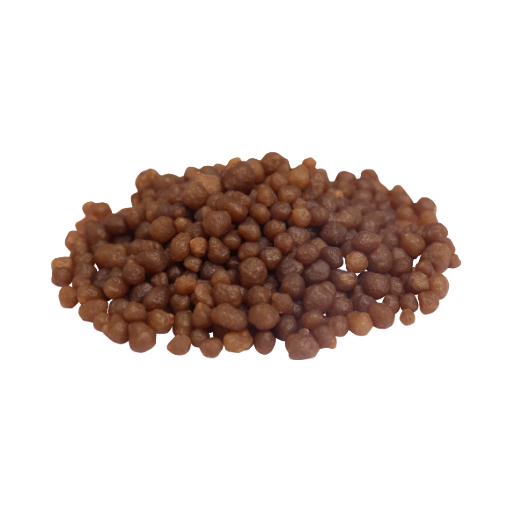
The use of Diammonium Phosphate (DAP) is an essential nutrient in yeast for fermentation. Nitrogen is required by yeasts to grow and multiply; this can be obtained readily through the supply of DAP, thereby ensuring a vigorous fermentation process takes place. It may help relieve sluggish or stuck fermentations which can affect the quality of the final product by providing assimilable nitrogen. The usage for DAP can also assist in reducing the formation of unpleasant sulfur compounds that contribute to cleaner tasting wine or beer. Through careful management of DAP addition levels based on specific yeast strains and fermentation conditions, higher yields and better finished beverages quality are possible.
As a Yeast Nutrient
This is because during fermentation, sugars are converted into alcohol by yeast, but only with sufficient nitrogen bases that support cellular growth and function. Both directing towards cells growth and functions generates ATP molecule hence aiding for energy production mechanism needed in their metabolism; biochemically it is a key role played by this microbial reaction. Lack of nutrients such as nitrogen can lead to poor fermentation activities such as stalled or slow processes; however, adding them ensures that they take place smoothly with no interruptions. This will result from minimizing off-flavors caused by sulfur compounds being produced due to actions of this component; thus creating more refined flavor profiles and aromas in final products. Balancing DAP utilization against strain specific needs and brewing specifications enhance wine or beer output efficiency as well as quality.
Impact on Fermentation Processes
The influence brought about by DAP on processes taking place during fermentation is multiple-folded and strong on its own way. A lot of yeasts activity occurrence when it comes to conversion sugars into alcohol depends on whether enough amount of nitrogen is available . Consequently there is low risk associated with potential problem like delaying or not starting at all for any reason . Actually , presence ample amounts nitrogen minimizes chances bad end-products like blockage or too slow course of reactions. Equally, fermentation as an environment is healthy due to a reduction in the creation of undesirable sulfur compounds that can cause bad flavours in the finished product. When DAP addition rates are carefully managed according to yeast strain specifics and fermentation conditions, higher wine and beer production volumes result.
Usage in Mead and Other Brews
The use of DAP (Diammonium Phosphate) in mead and other brews is essential for the success of fermentation. In honey-based mead production, honey is the primary source of sugar used for fermentation, but it lacks several essential growth factors including nitrogen. Therefore, adding this nutrient helps to maintain healthy development of yeasts throughout such processes by ensuring thorough sugar conversion into ethanol. Similarly, other brews like cider and fruit wines benefit from DAP supplementation to maintain yeast health and prevent fermentation issues such as sluggish or stuck fermentation. Optimum results must be achieved through following specific dosage regulations provided by brewers regarding a type of brew that requires usage DAP supplementations which may not affect flavor or aroma profiles when added correctly without any outcome on chemical aspects of beer or wine made out from it .
Chemical Properties of Diammonium Phosphate
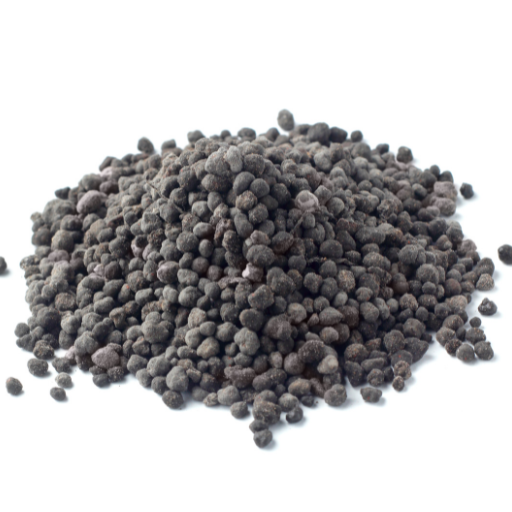
Diammonium Phosphate (DAP) is an ammonium phosphate salt that is water-soluble having a chemical formula of (NH4)2HPO4. It exists as white, odorless, granular crystals with high nitrogen and phosphorus content typically 18% N and 46% P2O5. DAP’s pH in aqueous solution lies between 7.5-8, rendering it less acidic than other phosphate fertilizers. Highly dissolvable in water, which adds to plants’ ability to absorb it and rapid incorporation into soil chemistry. This creates slightly alkaline solutions upon dissolution that neutralize acidity of soils. Moreover, DAP does not burn but can break down at high temperatures giving ammonia and phosphoric acid which may be dangerous. The chemical properties make it a good source of nutrients for agricultural and fermentation industries.
Physical Characteristics
The physical characteristics of diammonium phosphate (DAP) are very important because they influence its efficiency in various applications. Granular form defines DAP mostly seen as whitish or grayish grains. These are dust-free granules that do not retain moisture making them easy to handle, store or apply on crops or trees etc. The Chemical composition is shown by the formulae (NH4)2HPO4 meaning it has 18% nitrogen content and contains 46 % pentoxide phosphorus (P2O5). This solubility in water ensures that the nutrients become available immediately the fertilizer is used as well as when used as soil applications for microbial activity rates.
On top of this, a 1% solution of DAP has a pH ranging from 7.5-8 indicating slightly basic nature.This makes them good for use in acidic conditions so that better absorption can take place within plants.A further crucial factor to consider is yeast nutrient; hence DAP finds application during brewing involving home beer making withpurposeful nutrition of yeast needed for full and vigorous fermentation. At 155°C the substance may undergo decomposition releasing ammonia as well as phosphoric acid hence when dealing with at the high temperatures one should handle it cautiously. These characteristics highlight to DAP’s applicability in both fertilization and fermentation.
Technical Data:
- Chemical formula: (NH4)2HPO4
- Nitrogen content: 18%
- Phosphorus pentoxide (P2O5) content: 46%
- Physical form: White or greyish granular crystals
- Solubility in water: Highly soluble
- pH (1% solution): 7.5-8
- Decomposition temperature: > 155°C
These properties of DAP combine to make it a key ingredient in agricultural and fermentation industries through ensuring maximum nutrient availability and efficiency.
Solubility and Stability
When discussing the effectiveness of DAP as fertilizer and fermentation aid, solubility comes first. It dissolves quite easily since it is highly soluble in water, thereby making nutrients available for immediate plant uptake and microbial activity. This rapid solubility is important in achieving instant nutrient supply, particularly in hydroponic systems or foliar applications.
Regarding its stability, DAP remains stable under normal conditions of temperature and humidity; however, it starts decomposing at temperatures above 155 degrees Celsius, resulting in free ammonia gas and phosphoric acid. To prevent disintegration from breaking down this compound, which would, therefore, lose its nutrient efficacy due to high temperature effects, it should be stored carefully.
Technical Parameters related to Solubility and Stability:
- Solubility in water: Highly soluble
- Decomposition temperature: > 155°C
Proper handling methods and storage facilities are vital for preserving the integrity of DAP so that it can be successfully applied across different industries.
Reactivity with Other Compounds
The compounds are reactive with some other substances, which means they need to be handled and used carefully. DAP can give off ammonia gas if it is combined with alkaline substances like lime, calcium hydroxide or potassium nitrate. This reaction emphasizes the need to avoid such mixtures for avoiding loss of nutrients. Additionally, DAP can react with strong acids to form monopotassium phosphate and dihydrogen ammonium phosphate that will change the pH balance and nutrient profile of the mixture. Thus, it is a basic requirement that one must keep DAP in conditions that bar contact to highly reactive materials so as to maximize its effectiveness and ensure safety during storage and utilization.
Safety and Handling of Diammonium Phosphate
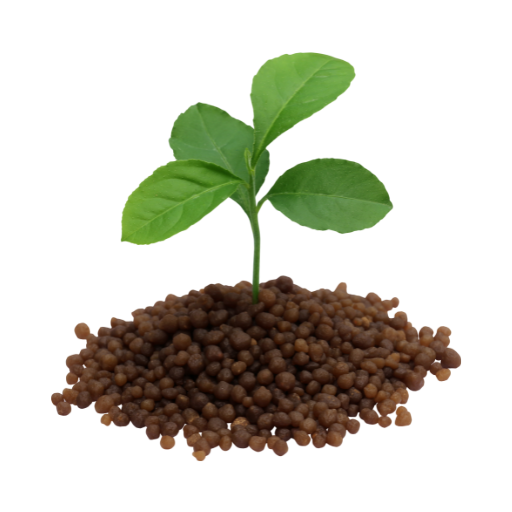
To minimize the effects on the environment, we need to consider some aspects when handling Diammonium Phosphate (DAP). The use of Personal Protective Equipment (PPE), including gloves, goggles and masks, should be encouraged to prevent skin contact with the chemical and inhalation of dust. The room should be properly ventilated so that ammonia gas, which may result during application or contact of DAP with alkalis does not accumulate. Keep DAP in a cool dry place away from incompatible materials such as concentrated acids and bases that may cause chemical reactions. Should any spillage occur mechanically collect the material without generating dust. Thoroughly wash hands after dealing with it and ensure that there are safety data sheets (SDS) available for any emergency assistance.
Understanding hazardous properties and safety measures
One of the hazardous properties of Diammonium Phosphate (DAP) is its ability to produce poisonous gas like ammonia by heating it up or reacting it with base substances. Therefore, taking precautionary measures is crucial in order to avoid accidents. According to major sources, when mixed with flammable materials, especially those capable of acting as accelerators in combustion processes such as plain wood; DAP can become a fire hazard faster than anything else known to man. For storage purposes it must be kept in sealed containers away from heat sources together with other like oxidizers and acids.
Technical Parameters and Safety Measures:
- Thermal Decomposition: Releases ammonia and phosphoric acid; keeping temperatures below 250°C avoids decomposition.
- Chemical Reactivity: Avoid use around strong acids and oxidizing agents due to risk of explosion.
- Personal Protective Equipment (PPE): To reduce contamination risks wear gloves, protective eyewear, or dust masks.
- Ventilation: Make sure that storage places and working areas are properly vented so that the released ammonia gas can dissipate rapidly.
- Spill Management: Without generating additional dusts collect using mechanical means, then dispose in accordance with the local rules and regulation.
These measures are essential to handle DAP safely and effectively while minimizing environmental and health risks.
Storage and handling guidelines to prevent accidents
- Storage Conditions: Store DAP in a cool dry place that is free from moisture, heat or direct sunlight. To avoid decomposition that could lead to product degradation, ensure storage temperature falls between 10°C and 30°C.
- Container Requirements: Corrosion-resistant tight containers must be used to protect the content against humidity and incompatible substances. Containers should be marked with appropriate labels indicating what they contain and the dangers they pose.
- Compatibility: Avoid mixing DAP with strong acids, oxidizing agents or flammable materials; proper separation of chemicals eliminates dangerous reactions among them.
- Handling Precautions: When working with DAP, wear suitable PPE, such as gloves, goggles, and respiratory protection, if dusty conditions may appear. Ensure normal hygiene, including washing hands after handling it.
- Spillage Response: In case of spillage, promptly contain spill material using mechanical methods avoiding dust generation. The area should then be cleaned completely by water before being disposed off according to local environmental regulations.
- Ventilation: Good ventilation should be available in storage and handling areas so that ammonia gas release under certain situations can be avoided.
Implementing these measures will help minimize risks associated with DAP, ensuring both safe usage and environmental protection.
Environmental impact and disposal of DAP
To have a little more nuance, diammonium phosphate (DAP) can potentially cause great damage to the environment if not properly handled. In farming and other applications, an overabundance of DAP could result in nutrient runoff contributing to water bodies’ eutrophication thereby depleting oxygen levels and harming aquatic life. Moreover, decomposing DAP leads to release of ammonia gas into the atmosphere which affects air quality negatively. In this connection, adherence to disposal guidelines is imperative. Disposing off unused DAPs must be done according to local environmental regulations which normally entail consultation with waste disposal authorities so that it does not get into water systems or contaminate other natural resources. Therefore, safe disposal may necessitate neutralization as well as solid waste management practices.
What are the Safety and Handling Precautions?
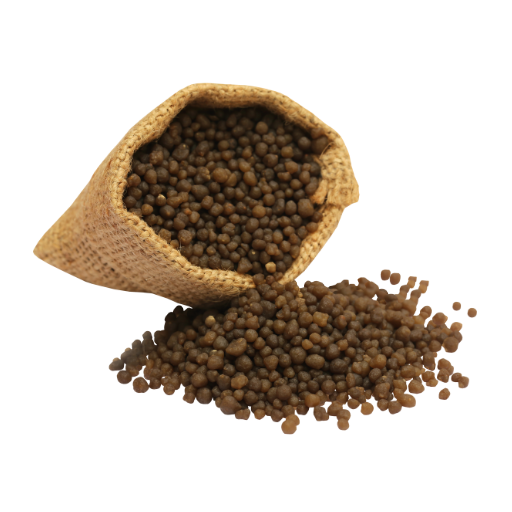
There are several safety precautions that must be taken when handling and using Diammonium Phosphate (DAP). To begin with, individuals should put on appropriate personal protective equipment [PPE] such as gloves, goggles and a mask in case there is a likelihood of dust formation. Having adequate ventilation in the storage and handling areas is vital since DAP has potential to release ammonia gas under specific conditions. Do not eat or breath it; In case of contact with skin or eyes immediately rinse asthewater for at least 15 minutes. In the event of a spill, contain it mechanically without generating dusts and clean up by mopping surfaces with water. Dispose waste according to national environmental regulations so as to prevent pollution. Regular hygiene practices including hand washing after working with chemicals are essential for safety.
Potential Hazards and Risks
- Fire Hazard: As such, Diammonium Phosphate itself does not burn but can make surrounding substances more flammable, hence increasing the combustion of other matter around it. In the presence of fire, DAP can decompose, releasing toxic fumes like ammonia and nitrogen oxides that cause irritation. Finally, it is rated by the NFPA as having no fire risk, thus given a flammability rating of zero.
- Health Hazard: Shortness of breath, coughing, and respiratory tract irritation may result from inhaling DAP dust. Prolonged exposure may cause respiratory diseases. Occupational health studies showed that long-term exposures resulting in dust concentrations above 15 mg/m³ have a significant impact on respiration.
- Environmental Hazard: DAP’s solubility in water makes it prone to nutrient pollution, which is responsible for aquatic eutrophication. This reduces oxygen levels in the water, endangering fish life. Studies indicate that nutrients originating from agricultural run-off are among the key contributors to hypoxic zones, such as those found within bodies like Gulf Mexico.
- Chemical Reactivity Hazard: This compound readily reacts with strong acids and bases. At high concentrations, it produces ammonia gas, which is hazardous if inhaled. OSHA data advise that the concentration of ammonia should not exceed 25 ppm to prevent adverse health effects.
- Corrosivity: Although DAP itself is slightly corrosive, dissolving it in water increases the corrosiveness of ammonium hydroxide solutions produced. Therefore, storage and handling equipment for DAP solutions must be made from corrosion-resistant materials to avoid degradation and contamination.
Proper Storage Solutions
Safety and maintenance of product integrity while storing DAP require several precautions and measures, as highlighted by leading sources. According to reliable resources, DAP should be stored in a dry, well-ventilated area away from heat to avoid absorbing moisture, which can lead to caking and depreciation of quality. Substances incompatible with DAP, like strong acids and bases, should not be present within storage sites to reduce reaction risks.
Technical Parameters:
- Temperature: Below 30 °C (86°F) [max] – to avoid thermal decomposition;
- Humidity: <50% RH –this prevents moisture build up in the product;
- Ventilation: In case DAP decomposes there should be adequate ventilation system to disperse any release of ammonia gas;
- Packaging: Use moisture-proof packaging such as polyethylene-lined bags for protection against atmospheric influences;
- Segregation: keep separate DAP from those chemicals like urea or ammonium needed for production of dangerous mixtures.
Observing these guidelines will help minimize the risk associated with storing DAP thereby ensuring safe use and effectiveness.
First Aid Measures
It is critical to take instant and fitting curative first aids to reduce probable health effects when exposed to DAP. If inhaled, move victim to fresh air right away; if respiratory symptoms persist, he or she should seek medical attention. In case of skin contact, the area should be properly washed with soap and water while any clothes that may have been contaminated must also be removed. For eye exposure, rinse eyes out with abundant water for no less than 15 minutes and see a doctor if irritation continues. Do not make someone throw out if they swallowed DAP but rinse their mouth with tap water and get medical help as soon as possible. Before initiating these initial remedies always ensure that the person affected is in a safe and uncontaminated environment.
Reference sources
- Mosaic Crop Nutrition
- Source: Diammonium Phosphate | Mosaic
- Summary: This source provides detailed information on the chemical composition, solubility, and pH level of diammonium phosphate (DAP). It is a valuable resource for understanding the nutrient content and usage guidelines in agricultural applications.
- PhosAgro
- Source: Diammonium phosphate fertilizer (DAP)
- Summary: This article outlines the benefits of DAP in providing full phosphorus nutrition throughout crop growth and development. It also describes its role as a starter dose of nitrogen, making it essential for various agricultural crops.
- Wikipedia
- Source: Diammonium phosphate
- Summary: The Wikipedia entry for diammonium phosphate covers its chemical formula, solubility, and various applications. It serves as a comprehensive overview of DAP’s properties and uses in different industries.
Related Reading: Analysis of Diammonium Phosphate Fertilizer: Benefits, Composition, And Usage






